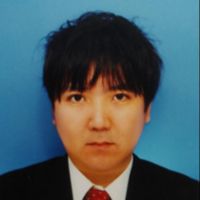Development of Advanced Energy-Harvesting Materials
A special issue of Materials (ISSN 1996-1944). This special issue belongs to the section "Energy Materials".
Deadline for manuscript submissions: closed (20 August 2024) | Viewed by 1468
Special Issue Editors
Interests: piezoelectric composites; piezoelectric nanogenerator (PENG); design of composites; functional graded materials; sensors
Interests: mechanics of materials; powder metallurgy; composite; sustainable; energy harvesting
Special Issues, Collections and Topics in MDPI journals
Interests: mechanics and design; multiscale and multiphysics simulation; fracture and damage; multifunctional composite materials; realization of a sustainable society
Special Issues, Collections and Topics in MDPI journals
Special Issue Information
Dear Colleagues,
Energy-harvesting materials are crucial for capturing and converting various forms of energy into usable electrical power. These materials encompass a wide range of technologies such as piezoelectric, triboelectric, thermoelectric, photovoltaic, and electromagnetic generators. They play a vital role in enabling the use of self-powered devices, renewable energy systems, and autonomous sensors. In recent years, significant advancements have been achieved in the development of materials specifically designed for efficient energy generation.
This Special Issue aims to explore the latest research and developments in energy-harvesting materials. We encourage submissions that focus on novel material compositions, advanced fabrication techniques, and improved energy conversion efficiency. Manuscripts presenting experimental studies, theoretical analyses, and modeling approaches are all welcome.
Topics of interest include, but are not limited to, the following:
- Advances in piezoelectric, thermoelectric, photovoltaic, and electromagnetic materials;
- Novel material designs for enhanced energy-harvesting performance;
- Flexible and wearable energy-harvesting technologies;
- Integration of energy-harvesting materials into practical applications.
With this Special Issue, we aim to contribute to the growing field of advanced energy-harvesting materials. Your expertise and research efforts will play a crucial role in unlocking new possibilities and advancing the practical applications of energy-harvesting materials. Together, let us pave the way towards a greener and more sustainable future.
Dr. Zhenjin Wang
Dr. Hiroki Kurita
Prof. Dr. Fumio Narita
Guest Editors
Manuscript Submission Information
Manuscripts should be submitted online at www.mdpi.com by registering and logging in to this website. Once you are registered, click here to go to the submission form. Manuscripts can be submitted until the deadline. All submissions that pass pre-check are peer-reviewed. Accepted papers will be published continuously in the journal (as soon as accepted) and will be listed together on the special issue website. Research articles, review articles as well as short communications are invited. For planned papers, a title and short abstract (about 100 words) can be sent to the Editorial Office for announcement on this website.
Submitted manuscripts should not have been published previously, nor be under consideration for publication elsewhere (except conference proceedings papers). All manuscripts are thoroughly refereed through a single-blind peer-review process. A guide for authors and other relevant information for submission of manuscripts is available on the Instructions for Authors page. Materials is an international peer-reviewed open access semimonthly journal published by MDPI.
Please visit the Instructions for Authors page before submitting a manuscript. The Article Processing Charge (APC) for publication in this open access journal is 2600 CHF (Swiss Francs). Submitted papers should be well formatted and use good English. Authors may use MDPI's English editing service prior to publication or during author revisions.
Keywords
- energy-harvesting materials
- piezoelectric nanogenerator (PENG)
- piezoelectric energy generator (PEG)
- triboelectric nanogenerator (TENG)
- thermoelectric generator (TEG)
- magnetostrictive energy generator
- electromagnetic generator
Benefits of Publishing in a Special Issue
- Ease of navigation: Grouping papers by topic helps scholars navigate broad scope journals more efficiently.
- Greater discoverability: Special Issues support the reach and impact of scientific research. Articles in Special Issues are more discoverable and cited more frequently.
- Expansion of research network: Special Issues facilitate connections among authors, fostering scientific collaborations.
- External promotion: Articles in Special Issues are often promoted through the journal's social media, increasing their visibility.
- e-Book format: Special Issues with more than 10 articles can be published as dedicated e-books, ensuring wide and rapid dissemination.
Further information on MDPI's Special Issue polices can be found here.








